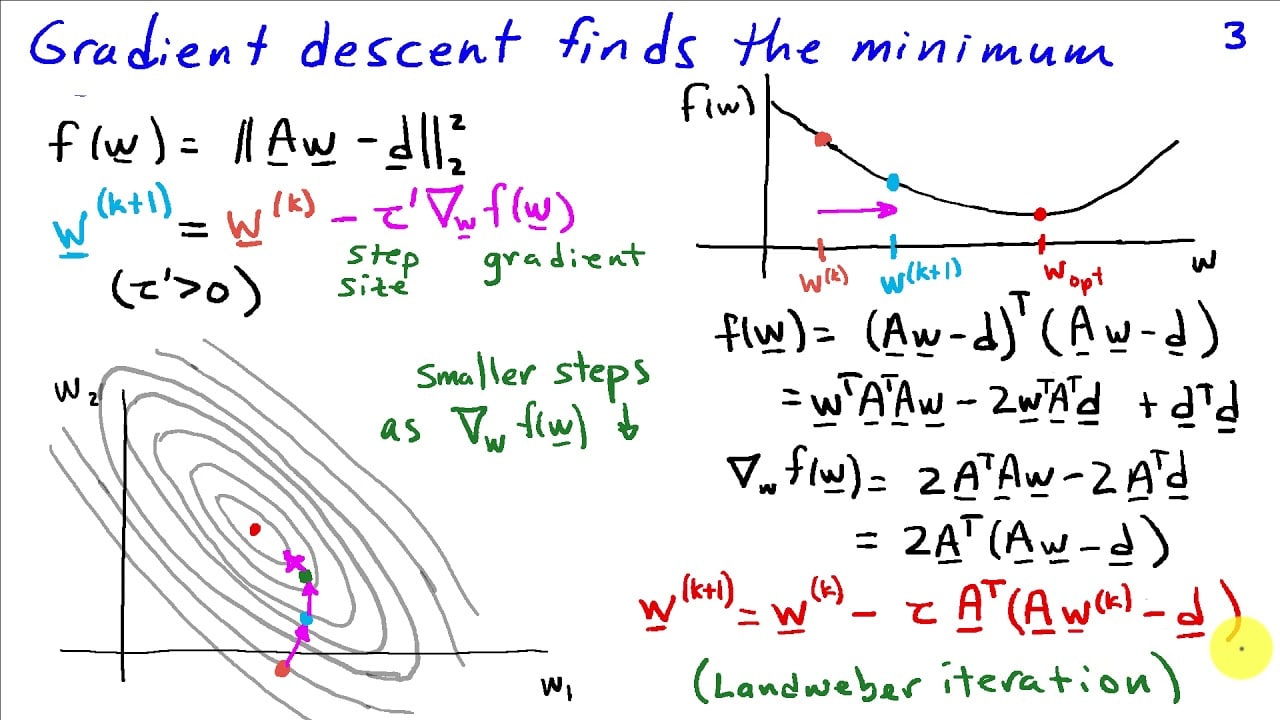Gradient descent is an iterative algorithmic approach used in Machine Learning to minimize an objective or cost function. It is used to optimize the parameters of a model, such as in Gradient Descent Regression, to achieve a maximum or minimum point with respect to the set of parameters. In other words, the goal is to find the parameters that minimize the cost function.
Gradient Descent works by calculating the gradient of a function at each point, and then adjusting the parameters accordingly. The gradient is the derivative of the cost function with respect to the parameter. If the derivative has a negative value, the optimal parameter is decreasing. The opposite holds when the derivative has a positive value. As the algorithm follows the descending gradient, it eventually reaches a point where the gradient is zero. At that point, the parameters would have reached its local minimum point.
In general, Gradient Descent is a well-suited approach to optimize nonlinear functions. It works within small datasets as well as large complex ones. It is also easy to implement because it follows a s straightforward mathematical approach.
An important part of the Gradient Descent algorithm is the learning rate. This parameter determines how fast the algorithm will adjust the parameters. A higher learning rate can cause the algorithm to diverge or oscillate instead of converging to the local minimum point. Therefore, selecting a proper learning rate is an important part of the Gradient Descent optimization process.
Gradient Descent is widely used in Machine Learning applications such as Neural Networks or Support Vector Machines. It is also used in other fields such as Search Engines or Natural Language Processing.






